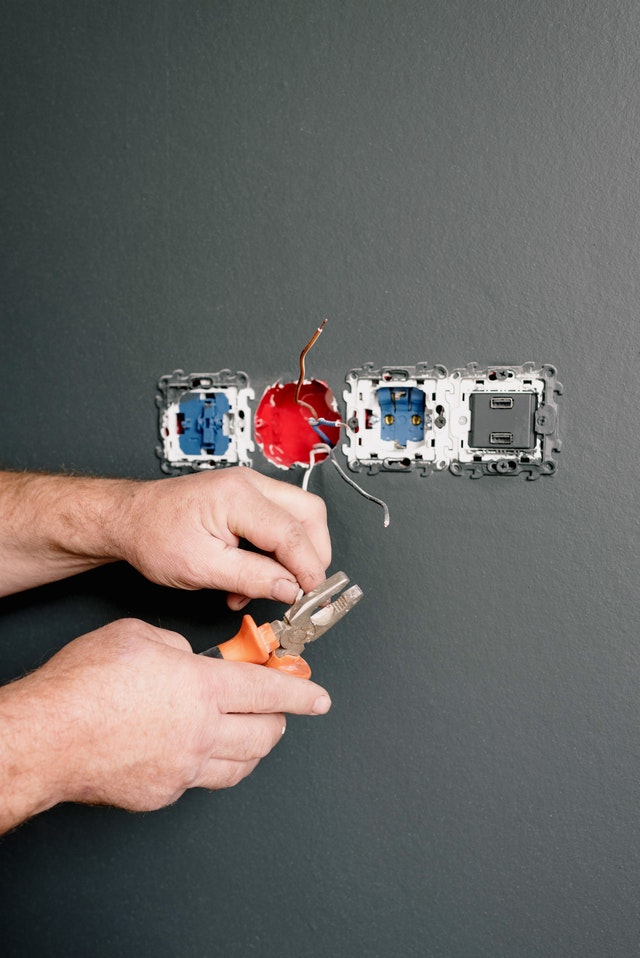Whether you’re moving into your first apartment or are living in the family home for years, it’s important to have basic know-how in maintenance. Although professional services are readily available, knowing simple repairs can spare you from additional expenses, as well as resolve issues ASAP.
This is a contributed post and do not necessarily reflect the opinions of Meet The Harris Family.
Fortunately, you don’t need to be an expert to be a DIY handyman. Also, you don’t need “complex tools,” like a euro profile cylinder lock. The basic wrench, screwdriver and other tools can get you through with the following home maintenance tasks.
Reset a Tripped Circuit Breaker

If you’re trying to watch TV, blow-dry your hair and run the air conditioner all at the same time, you ought to know how to fix a tripped circuit breaker. The first sign of this is when everything shuts off.
Start by familiarizing yourself with your house or apartment’s breaker box (if you have access to it). Open the cover and check if there’s a breaker displaying a red marker window (a sign of circuit tripping) or one that was switched off.
Turn off all the appliances and lights connected to the breaker before you flip the tripped breaker to “ON.” If the appliances and lights work, you did it! If not, call your local electrician.
Since you are dealing with electricity, avoid touching the breaker box with wet hands. If there is water on the floor, dry it up immediately.
Hang a Shelf or a Painting
If you’re hanging anything with a heavyweight to it, find a wall stud first. These studs are vertical boards that frame the elements of your home and hold up the walls. Use a store-bought stud finder to easily locate a wall stud. Some stud fingers also use magnets to find screws or snails in the stud. On the other hand, stud-finding apps look for magnetic field disruptions.
But if there isn’t a study in the wall, use a molly bolt or a drywall anchor – both of which are available in your local hardware store. Ideally, the anchor should go into the wall first before you attach the screw. This ensures a more secure hold.
Before you start drilling, take note of the placement of pipes and electrical wires to avoid hitting them. Also, be careful when drilling in the kitchen or bathroom and avoid areas with outlets.
Turn Off the Water
In case of an emergency, know where your home’s main water shut-off valve. Some valves have lever-style handles while others have round-wheel handles. If you have the round-wheel handles, turn it clockwise (to the right) to shut off the water. If you have a lever-style handle, turn the lever a quarter turn instead of parallel.
If you are going away on vacation, shut off the water in your home to prevent the plumbing from leaking.
Fix a Running Toilet
A toilet that runs endlessly wastes water over time – not to mention the nuisance it creates. Fortunately, you can stop this issue without a plumber. Just replace the flapper inside of the toilet tank.

Patch a Small Hole in Drywall
Whether you’re a homeowner or a renter, knowing how to patch holes in the wall is a handy skill. To fill in the small holes left by screws or nails, fill the hole with a spackle. Make sure it’s flush with the wall by leveling it off. Once the spackle is dry, sand the wall until smooth. For the final touch, paint over the hole.
Why Plan for a DIY Home Maintenance?
Home maintenance tasks are life skills. These types of skills are worth your while AND can save you money. Also, there’s a good chance you can use these skills in your future home, whether the property is a rental or your purchase.
Plus, saving money is always a good idea. Hiring professionals and handymen can be expensive. If you don’t have the budget to pay for their expertise, best to master a few home maintenance skills.
When Should You NOT DIY Your Home Repairs?
While most home maintenance tasks are fine to DIY, there are specific tasks you shouldn’t fix yourself. If DIY could result in exponential costs, more damage or severe injuries, it’s best to have a professional handle the repair.
Leave the following tasks to the professionals:
- Asbestos removal
- Electrical rewiring
- Pest infestation
- Roofing
- Major plumbing
- Mold removal
- Structural modifications or changes
- Water damage
You don’t need a high school degree to perfect the art of home improvement. DIY home maintenance tasks should be a part of every homeowner’s to-do list. Hone up a few home improvement skills to save money and time.



I never knew that a circuit breaker would trip if you happened to use several appliances at once. My friend mentioned that he wants to live alone and away from his family despite being a klutz. Maybe he should consider looking for an electrician if ever this issue happens to him